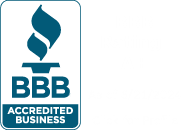Last updated on: May 20, 2025
When it comes to the question of what a nonprofit website should include in order to be the most effective in advancing your organization’s mission, you have to think about why people visit a website in the first place.
There are some basic guidelines that will greatly help your website define clear goals and stay on track. Today we’re looking at these nonprofit website ideas.
With 15+ years of experience, BryteBridge Nonprofit Solutions’s website design and development services can help you realize the full potential of your website, making it a true workhorse in your nonprofit organization.
The Four Essential Components of Success
Over the years, we’ve been able to boil down the question of what a nonprofit website should include to four essential components: telling your story, building a home on the web, calling visitors to action, and getting the nitty-gritty details right.
1. Tell Your Story
The first answer to what a nonprofit website should include is a story. People love stories, and your organization has a story to tell. In fact, every successful nonprofit organization has a narrative that drives engagement.
A visitor to your site might only spend a couple seconds looking at your homepage before deciding whether to read on or click away. In that short time, they’ll be making intuitive judgments on critical questions like:
- Do you have what they’re looking for?
- Are you trustworthy?
- Are you interesting?
They’re going to base their judgment partially on the nitty-gritty details of your site, which we’ll talk about later. But they’re also going to be heavily influenced by the presence (or lack) of a compelling hook that keeps them reading. This is where your story comes in, and it’s why a nonprofit website should include a strong narrative.
By clearly stating your most basic elevator pitch and value proposition right at the top of your homepage (or landing page), followed by a compelling opening paragraph that immediately draws a visitor into your narrative, you will greatly increase your chances of keeping them on your website long enough for them to decide to engage with you—by signing up, making a donation, or whatever else it may be.
2. Make Your Website the Center of Your Brand on the Internet
Your website should be the center of your online platform. Think of it as your home on the web, and the center of your brand.
Unlike social media networks, you have full control over your website, which is vital to projecting your authenticity and authoritativeness, and to designing an experience that will build engagement. Social media is an easier way to get more eyeballs on your content in a hurry, but it’s better to think of social media as a place for building brand awareness rather than generating donations and volunteerism.
Your website is usually where people are going to make an actual commitment to your organization. That’s why successful nonprofit website ideas feature good calls to action so prominently.
3. Call Visitors to Action
Many visitors to your site will sympathize with your nonprofit’s goals, but need an extra push before they’ll make a commitment. Calls to action (CTAs) are a way to give them that push, and every nonprofit website should include them prominently.
The recipe for a successful CTA is to give visitors a specific action they can take, right now, that’s simple, quick, and advances your goals. It should offer value not only to you but to the visitor as well, so a good CTA needs to anticipate why the visitor is considering engaging. People have different reasons, so there’s no one answer. This is one example of why your audience targeting is crucial.
It helps to phrase your CTAs as a direction instead of a question, by beginning them with a clear verb, e.g., “Contribute $25 today and get 25% off in our store.”
There are many other CTA best practices, and at BryteBridge Nonprofit Solutions we can help you learn the ropes and craft the most successful CTAs.
4. Take Advantage of What Digital Media Can Do
The next step when it comes to deciding what a nonprofit website should include is to make sure you take full advantage of the Internet as a medium. That means delving into the nitty-gritty details and using all the tools available to make your website as successful as it can be.
Here are the core nonprofit website ideas that form the basis of our web services:
- Web strategy consultation: Integrate your website’s design and functionality into your organization’s mission goals using web design best practices. Every nonprofit website should include a clear long-term strategy that defines “success.”
- Website design and development: Build a convenient, compelling user experience (UX)—for both desktop and mobile device users—that motivates visitors to your site to engage with your organization.
- Themes and customization: Align your website’s UX and visuals with your nonprofit’s brand, and implement custom functionality requirements.
- Online donations: Make online donations easy and secure for visitors to your site.
- Photo album & video integration: Give your site a fresh, personal feel with seamless photo album and video player integration. Compelling visuals are one of the most overlooked details when it comes to what a nonprofit website should include!
- Social media integration: Funnel social media engagement onto your website to create a more coherent, streamlined platform.
- Search engine optimization (SEO): Increase your website’s rankings on search engine results pages so that your website shows up at the top.
- Newsletter signup: Create a valuable e-mail connection with active or potential donors and volunteers.
- Blog setup: Blog posts help you tap into the long tail of specific issues that relate to your organization’s mission, allowing you to connect with potential donors and volunteers who wouldn’t have otherwise been looking for you.
- Analytics and reporting: Capture good data on how visitors use your site in order to better understand what is working and what needs improvement. This is one of the most valuable tools that a nonprofit website should include.
- Web hosting: Use secure, reliable servers to store and deliver your website’s information to visitors from around the block and around the world.
- Online store: Maintain an online storefront to sell merchandise to raise funds and expand your brand awareness.
What Should a Nonprofit Website Include: Personalized Support from BryteBridge Nonprofit Solutions
These nonprofit website ideas, when implemented optimally, will greatly improve your prospects for website growth, which in turn will greatly benefit the long-term success of your organization.
At BryteBridge Nonprofit Solutions, we offer not only these web services, but all the services a nonprofit organization needs to get started and build a lasting success, including 501c3 tax exemption applications, payroll services, graphic design, and fundraising.
Give us a call today to speak with a consultant who can help you develop your organization both online and off!




